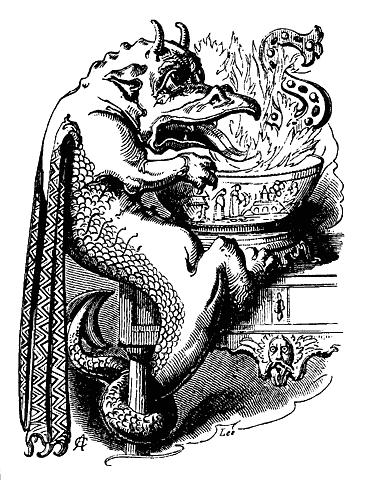While researching the most recent podcast episode, I came across a game inspired by Bakunawa that children play in the Philippines. In the game, one child is the moon and another is Bakunawa. The rest of the children link hands and circle the moon. Bakunawa tries to get tag the moon by sneaking into the circle or breaking the chain. They can ask other players what the chain is made from, and they can reply with different materials. If they want, they can say something weak, like the abaca plant, and let go of the next hand, allowing Bakunawa in to capture the moon.
This seemed like a delightful game, and I began to wonder what other dragon-based games are out there. I did some digging, and this is what I came up with.
Vietnam: Dragon-Snake
This game involves a dragon going to the doctor to get medicine for his sick son. One child sits on a high place, like a hill, and is the doctor. The rest of the children stand in a line and hold the shirt/belt/shoulders of the person in front of them. The first person is the dragon’s head, the last is its tail.
The dragon head calls out for medicine for his son and the doctor asks how old the son is. The dragon replies he’s one. The doctor says he is not well. This repeats until the dragon reaches ten. Then the doctor says, “All right, the doctor is well.”
The doctor stands up and asks for the dragon’s head. The dragon says, “Nothing but the bones.” The doctor asks for the body and the dragon says, “Nothing but the blood.” The doctor asks for the tail and the dragon says, “Pursue at will!”
The doctor then tries to catch the tail of the dragon. The head of the dragon puts up their arms and moves around, blocking the doctor. At the same time, the tail tries to join with the head in a circle. If the doctor gets through and tags the tail before they can form a circle, the doctor wins.
As a variation, the doctor can tag any child in the chain besides the head. In this case, the tagged child becomes the doctor.
Catch the Dragon’s Tail
Everyone stands in a line and holds hands. The first person is the head and the last person is the tail. The head tries to catch the tail. Everyone else must hold on tight as the tail tries to run away. The game is over when the head catches the tail or when the chain breaks. Then, the head becomes the tail and everyone moves forward one spot. Variations on this game are played throughout Eastern Asia and Southeast Asia.
The Phillipine variation of this can be played with two dragons, each head trying to catch the other’s tail. The winners are whichever head catches the other tail first, or whichever dragon stays together longest.
The Indonesian variation involves two children chosen as dragon heads who hold up their hands to form a gate that the other children must walk through while chanting:
“Ular naga panjangnya bukan kepalang. Menjalar-jalar selalu kian kemari. Umpan yang lezat, itu yang dicari. Kini dianya yang terbelakang”
(A long dragon snake is slithering to and fro. The delicious prey at the back is what it looks for.)
The heads then capture the child currently underneath their arms and argue for which dragon the captured child should join. Once all of the children have been captured and picked a dragon, the dragons chase each others’ tails.
Snap Dragon

Shifting further west, there was a game played in England, the U.S., and Canada called snap dragon. It was less for children and more for young adults and involved filling a shallow dish with brandy, tossing in a few raisins, turning out the lights, and lighting the brandy on fire. Participants then took turns trying to snatch out the raisins and extinguish them by eating them, looking like a fierce dragon as they consumed the fire.
Come on, I couldn’t resist adding that game to the list, even if it isn’t in our current region. I’d love to hear any dragon-influenced games from your area. Extra points if they involve fire.
Sources:

Koji A. Dae
Koji is a dreamer, a mother, and a writer in that order. The first short story she clearly remembers writing involved fairies losing their wings, and ever since then mythology has found different ways to creep into her storytelling.

Be First to Comment